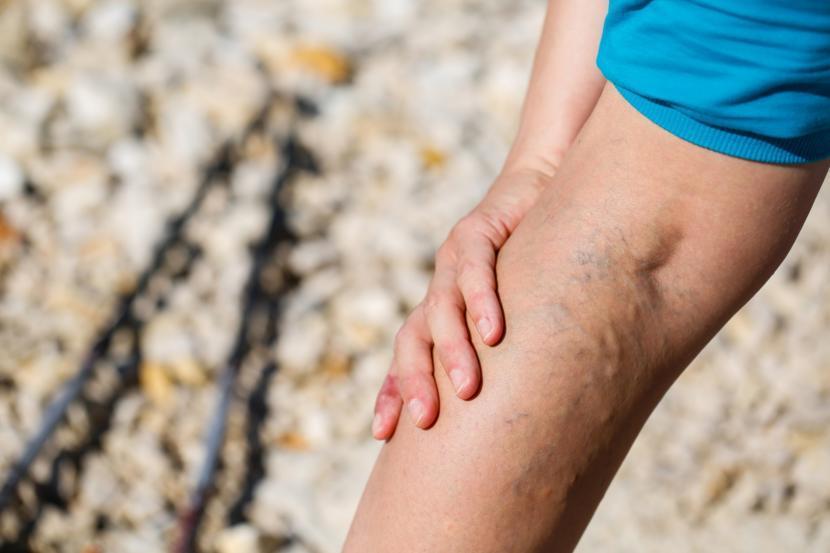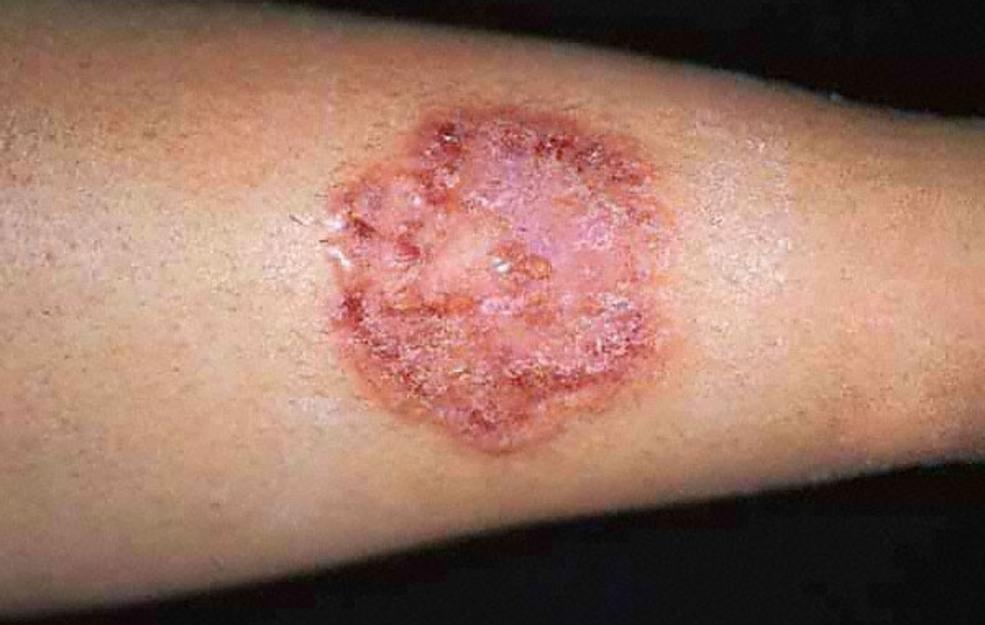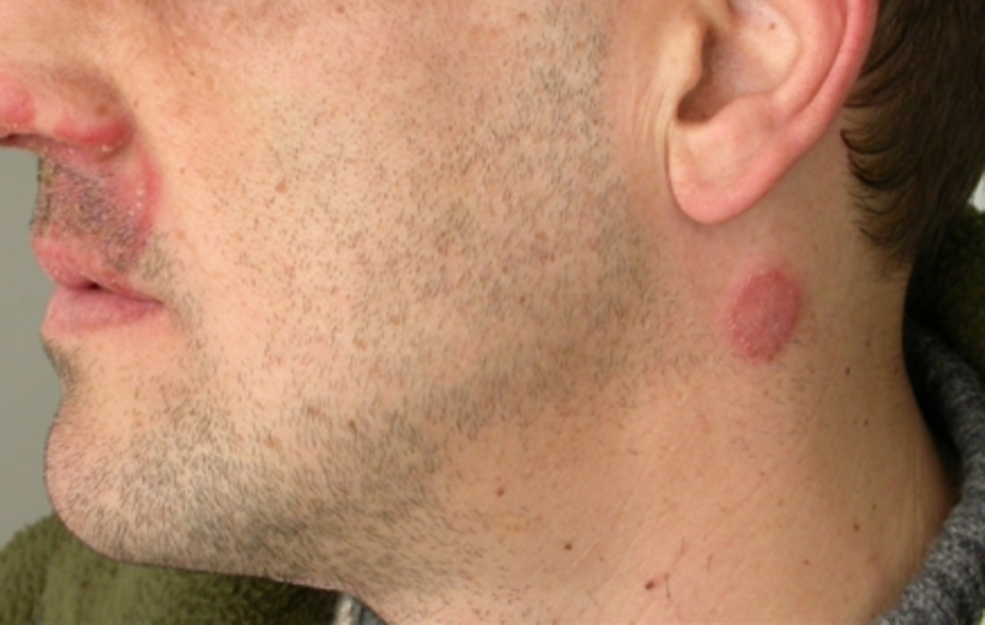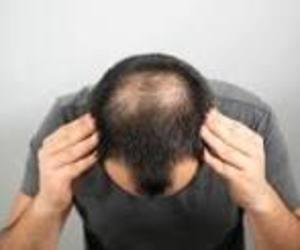What Is Ringworm?

Ringworm, or tinea, refers to a fungal infection of the skin. The term ‘worm’ is derived from the old belief that the disease was caused by a worm. The term ‘ring’ refers to the characteristic ring-shaped patches produced by the fungus on the skin. Infection is often found in the outer layer of the skin. There are several types of ringworm, like the ringworm that causes athlete’s foot, ringworm of the scalp, and jock itch. Ringworm may infect the feet, hands, groin, beard, scalp, or body.
This infection is caused by the fungi belonging to the fungus group called dermatophytes, which grow on the outer layers of the skin.
What's the cause of ringworm?
- The fungus may spread from infected animals, like pet rabbits, ferrets, goats, pigs, horses, and human beings
- Through direct skin contact with an infected person
- By touching surfaces touched by infected person
- Sharing clothes, towels, bedding, combs, and brushes
- Through contact with infected soil
The chances of ringworm infection is greater if you spend more time in humid, damp, and crowded places, as the fungus grows well in warm, moist environments. Participating in sports, like wrestling, football, and rugby, where the chances of contact are greater, also increases the risk quotient of getting this infection. People with weak immune systems and those who wear tight-fitting clothes also have a higher probability of fungal infection.
What are the symptoms of ringworm?
The most common symptom of ringworm is the presence of itchy rashes that are mostly circular in outline. Rashes have a reddish, raised edge with normal skin in the middle. More than one patch of infection may develop at the same time on the skin. Rashes are present in the skin folds, in the groin, and in jock itch. When infection is in the hands, the skin becomes thick and scaly in appearance. Sores usually develop in the spaces between the fingers, which provide a more optimal atmosphere for the fungus to grow. If infection affects the nails, the nails may become discolored and brittle. Fungal infections of the scalp cause the formation of bald patches on the scalp. One should meet with a doctor if there is excessive redness, swelling, and fever along with patches on the skin.
Infection by this fungus often remains in the upper layers of the skin and does not cause any other serious condition. The infection may persist even after a round of treatment in people with a weak immune system.
What does ringworm look like?
Ringworm appears as round, red patches on the skin that are inflamed at the edges. In case of scalp ringworm, patches of hair loss appear on the scalp. They are blister-like lesions and can be very itchy.
Is ringworm contagious?
Yes, it is a very contagious skin condition. It can easily be passed through skin-to-skin contact with an infected person or pet (for example, dogs). In fact, it is so contagious that it can spread though indirect contact as well. For example, you can get the infection by touching clothing, utensils, seats, or any other object that has come in contact with the skin of infected person.
It can also be acquired in a hot tub or swimming pool. A person can pass this fungal infection as long as lesions are present. Once the treatment has begun, ringworm stops being infectious after about 24-48 hours.
Ringworm of the scalp
Ringworm of the scalp, also called tinea capitis, is a fungal infection that affects your scalp and hair shafts, causing round and itchy patches.
The most common symptoms of scalp ringworm include:
- Itchy patches on the scalp
- Sections of hair may break off at or close to the scalp
- Scaly, red areas or bald spots
- Black dots at the area where the hair has broken off
Other symptoms include:
- Painful scalp
- Brittle hair
- Low-grade fever
- Swollen lymph nodes
In more severe cases, the person may have kerion, crusty swellings that drain pus. These can cause permanent scarring and bald spots.
Diagnosing ringworm of the scalp
Your doctor will perform a visual examination to diagnose ringworm on your scalp. He or she may use a special light called a Wood’s lamp to see your scalp clearly and identify signs of infection.
In order to confirm diagnosis, your doctor may also take a hair or skin sample. The sample is sent to the lab to confirm the presence of fungi.
How to get rid of ringworm of the scalp
Your doctor will prescribe you medicated shampoo along with oral medications.
Antifungal medication
Terbinafine hydrochloride and griseofulvin are the two leading antifungal medications for ringworm. You are required to take these medications for approximately 6 weeks.
Medicated shampoo
Your doctor may prescribe a medicated shampoo to eliminate fungal infection and prevent further transmission. The shampoo contains active antifungal ingredients like ketoconazole or at least 2.5 percent selenium sulfide that help prevent fungus from spreading. Just leave the shampoo on and rinse it thoroughly after 5 minutes.
How to get rid of ringworm of the skin
Since the symptoms of ringworm are quite similar to those of other skin rashes and psoriasis, proper diagnosis becomes crucial in order to provide appropriate treatment. In order to diagnose this condition, doctors may take skin samples and perform fungus culture tests to identify the cause. Once the cause has been determined, the doctor can start proper treatment.
If the infection is mild, ringworm can easily be treated with non-prescription topical antifungal medications. Your doctor may prescribe you some antifungal cream, lotion, or ointment to apply to the infected area. Applying medications such as Micatin or Lamisil on the area twice a day can help you get rid of ringworm fast. Once the treatment has begun, ringworm is infectious only up to 48 hours. The infection usually clears up in 3 to 4 weeks. However, continue applying the medication for another week to make sure the infection doesn’t recur.
If the infection is severe, your doctor may also prescribe you oral antifungal medication along with the topical medication. You need to use these medications for a few weeks. If you are suffering from scalp ringworm, you have to use an antifungal shampoo.
Topical creams include these:
- Econazole
- Clotrimazole
- Miconazole
- Ketoconazole
- Terbinafine
Oral medications include the following:
- Grisefulvin
- Terbinafine
- Itraconazole
Is there a home remedy for ringworm?
While there are some natural home remedies you can use to prevent the further spread of fungal infection, you must consult your doctor first before trying any of these. Many of them are safe to use, but you must consider the severity of your infection first.
Here are a few home remedies for ringworm you can try after consulting your doctor. While medications in the form of liquid can be applied directly on the infected area using a cotton swab, others can be crushed and applied directly using a bandage.
- Garlic extract
- Tea tree oil
- Coconut oil
- Apple cider vinegar
- Turmeric
- Mustard seeds
- Colloidal silver
- Aloe vera
- Vinegar and salt
- Olive leaf
- Lemongrass tea
Ringworm in dogs
Dogs may catch ringworm through direct contact with the fungus. This can happen if they can come in direct contact with an infected person or animal. They can also catch it indirectly if they come in contact with an infected object like food bowls, carpets, combs, or bedding. The fungal spores responsible for the transmission can remain active for up to 18 months. They mainly spread through breaking off or shedding of contaminated hairs.
What are the symptoms of ringworm in dogs?
Some common symptoms of ringworm in dogs are:
- Circular patches of hair loss that sometimes appear red in the center
- Dry, brittle hair
- Rough, brittle claws
- Shabby, inflamed skin
Diagnosis of ringworm in dogs
To give appropriate treatment to your dog, your vet will first diagnose by performing certain physical tests. He may take a skin cell or hair sample of your dog for a fungal culture. He may also examine your dog’s infected hairs under a special ultraviolet light.
Once the presence of ringworm is confirmed, he will discuss treatment options for your dog.
Treatment of ringworm in dogs
Usually, ringworm in dogs is treated in the following ways:
- Oral medications
- Topical therapy
- Environmental decontamination
The bottom line
In order to prevent ringworm, you must follow the best hygiene practices. Always keep your skin clean and shampoo regularly. Avoid sharing items with someone you don’t know personally.







































